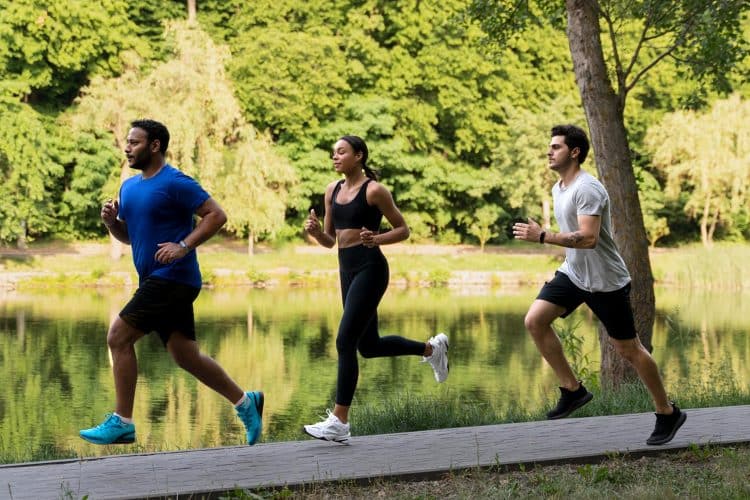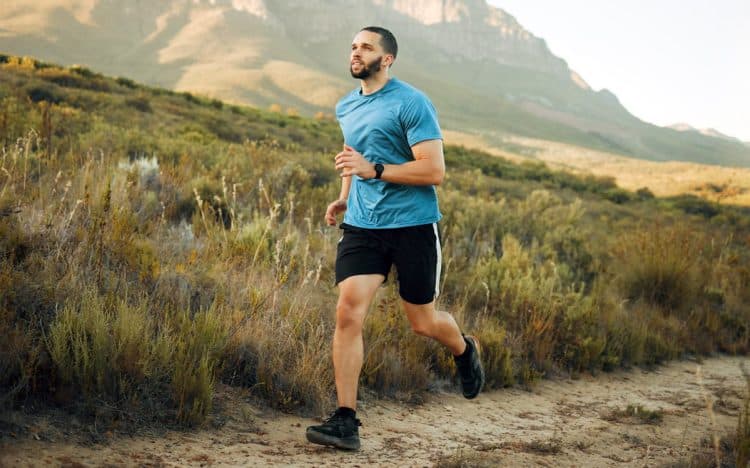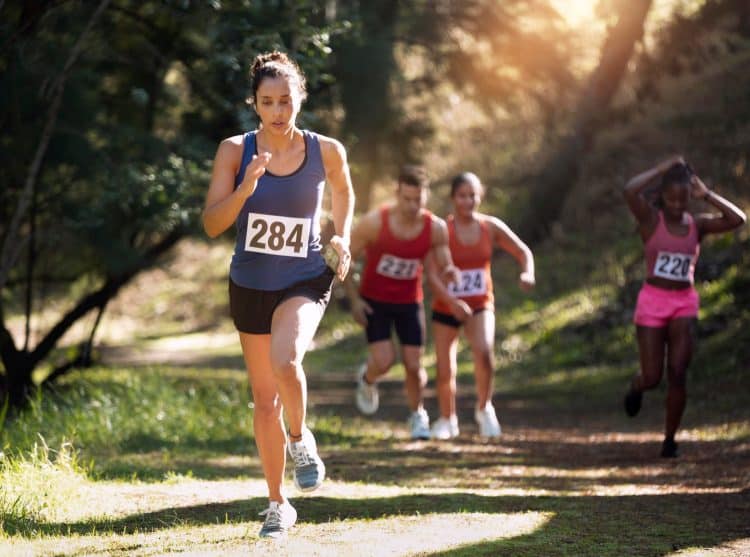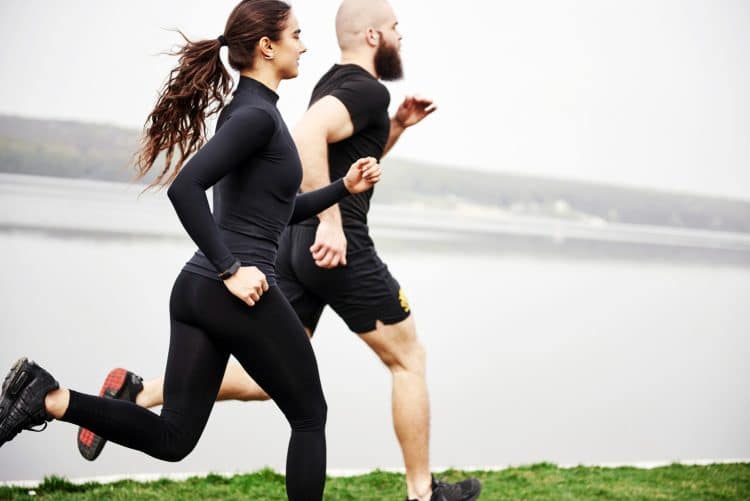The average 5K time varies for runners and walkers, but typical finish times fall between 26-42 minutes for runners and 45-60 minutes for walkers. Factors like age, fitness, and experience influence pace.
Introduction to Running a 5K
Remember that first exhilarating 5K? Heart pounding, lungs screaming, legs on fire – yet a triumphant grin plastered across your face. You crossed the finish line, a sweaty mess, but a conqueror nonetheless.
You joined the ranks of millions who’ve embarked on this ubiquitous test of grit and grace. But amidst the post-race endorphin rush, a question inevitably pops into your head: “How’d I do?”
Enter the mythical beast: average 5K time. A tantalizing benchmark whispered in online forums and splashed across running magazine covers. It beckons with the promise of validation, a yardstick to measure your progress against a faceless legion of fellow runners.
But before you get seduced by this siren song, let’s crack open the stopwatch and dissect its true meaning.
Level Up Your Fitness: Join our 💪 strong community in Fitness Volt Newsletter. Get daily inspiration, expert-backed workouts, nutrition tips, the latest in strength sports, and the support you need to reach your goals. Subscribe for free!
History of 5K
The 5K, a deceptively simple 3.1-mile sprint, holds a unique place in running culture.
It’s the gateway drug, the baptism by sweat, the proving ground for beginners and elites alike.
Its history, though relatively young, is steeped in the evolution of our relationship with running.
From humble beginnings as a military fitness test in the 1800s, it blossomed into a global phenomenon in the 1970s, fueled by a burgeoning fitness craze and a growing appreciation for accessibility.
Today, it pulsates as the lifeblood of local races, drawing millions each year.
So, where does this elusive “average” fit in? The truth is, it’s a double-edged sword.
On one hand, it offers a comforting reference point, a ballpark figure to gauge your performance against.
But on the other, it risks morphing into a rigid measuring stick, ignoring the kaleidoscope of factors that make each runner unique. Age, gender, fitness level, terrain, weather – these all play a virtuoso concerto in dictating your personal tempo.
A study by Stevinson and Hickson (2014) on Parkrun, a network of free weekly timed 5K runs, showed that regular participation led to fitness improvements and health-related benefits. (1)
As a veteran personal trainer with seven years of experience, I’ve witnessed countless 5K journeys, each unfolding in its own glorious rhythm.
My goal is to equip you with the knowledge and inspiration to navigate your own path, leaving the shackles of “average” behind. Let’s embark on this exploration together, shall we?
Check Out: Calories Burned Running Calculator
Average 5K Time By Age and Gender
Cracking the code of the elusive “Average 5K Time” feels like deciphering ancient hieroglyphics, riddled with variables and shrouded in a cloak of individuality.
Don’t fret, fellow fitness fanatics! This section is your Rosetta Stone, unraveling the mysteries of pace across age, experience, and more. Buckle up because we’re about to dissect the data like a seasoned anatomist.
On one end, you have the spry youngsters, defying gravity with sub-20-minute finishes. On the other, seasoned veterans conquer the course with the wisdom of accumulated miles. Let’s break it down by gender.
Average 5K Time For Males Based on Age and Experience Level:
According to Running Level, a site dedicated to documenting running performance for all distances, these are the average 5K times for men:
| Age Group: Male | Beginner | Novice | Intermediate | Advanced | Elite |
| 20-30 | 31:29 | 26:19 | 22:31 | 19:44 | 17:40 |
| 30-40 | 32:12 | 26:56 | 23:01 | 20:11 | 18:05 |
| 40-50 | 34:27 | 28:48 | 24:39 | 21:35 | 19:20 |
| 50-60 | 37:19 | 31:12 | 26:42 | 23:23 | 20:57 |
| 60-70 | 40:45 | 34:05 | 29:23 | 25:32 | 22:52 |
| 70-80 | 46:29 | 38:52 | 33:16 | 29:08 | 26:05 |
| 80-90 | 1:00:09 | 50:17 | 43:02 | 37:42 | 33:45 |
Average 5K Time For Females Based on Age and Experience Level:
| Age Group: Female | Beginner | Novice | Intermediate | Advanced | Elite |
| 20-30 | 35:27 | 30:08 | 26:07 | 23:04 | 20:47 |
| 30-40 | 35:51 | 30:29 | 26:25 | 23:20 | 21:02 |
| 40-50 | 37:56 | 32:15 | 27:56 | 24:42 | 22:15 |
| 50-60 | 42:02 | 35:44 | 30:58 | 27:22 | 24:40 |
| 60-70 | 47:31 | 40:24 | 35:00 | 30:56 | 27:53 |
| 70-80 | 54:42 | 46:30 | 40:18 | 35:36 | 32:05 |
| 80-90 | 1:08:26 | 58:12 | 50:25 | 44:33 | 40:09 |
Factors Affecting Average 5K Time
Average 5K times are just the tip of the iceberg. Beneath the surface lies a complex orchestra of factors influencing your performance:
Training and Experience
Joshua Cheptegei of Uganda holds the world record (12:35.36 ) for the fastest 5K, which he set in 2020. On the women’s side, the record is held by Ethiopian Letesenbet Gidey (14:06.62), which she also set in 2020.
Now, beginners shouldn’t focus on breaking these records, as it will only result in disappointment (and injuries). You must give your body enough time to adapt to your running schedule.
Conditioning the body can take a long time, and rushing the process will do you no good.
Genetics
Your genetics play a major role in your body composition, muscle fiber types, lung capacity, running gait, stride, and step length, all of which can influence your average 5K time. Plus, genetics also dictate the amount of time it takes for you to recover after a training session.
Running Form
Running for optimal results involves learning and unlearning a lot of things. I know people who have had to tweak their posture to improve their running form.
I highly recommend working with a running coach to maximize your running performance. It might cost some money upfront, but it saves you a lot of wasted time and effort and possible injuries in the long term.
Environmental Conditions
You cannot rule out the role of the environmental factors involved in your running performance. For example, our friends Cheptegei and Gidey probably cannot replicate their WR performance each time they take the field.
Their WR performance was the result of the elevation, weather, terrain, and even air quality at the running venue. Similarly, you shouldn’t expect to set a PB every time you run.
Going Past the 5K Benchmark
If you are dedicated to your running goal, you will eventually break past the average 5K time for your age, gender, and experience level.
Level Up Your Fitness: Join our 💪 strong community in Fitness Volt Newsletter. Get daily inspiration, expert-backed workouts, nutrition tips, the latest in strength sports, and the support you need to reach your goals. Subscribe for free!
After that, you have two options. You could either rest on your laurels or push yourself to fulfill your potential. If you are like most competitive runners, you’ll probably choose the latter.
In this section, I will take you through the process of crafting a personalized 5K training program to achieve your best performance.
I’ve used this training program with my amateur and professional athlete clients, and it has delivered mind-boggling results; there is no reason why you can’t replicate the outcomes.
1. Navigating the Terrain: A Self-Assessment Expedition
Before plotting your course, you need a map. Start by taking a good, honest look at your current landscape:
- Running Experience: Are you a newbie navigating your first few kilometers, or do you have a few 5Ks under your belt? Every step counts, no matter where you stand.
- Time Goals: What’s your definition of “success”? Do you dream of shaving minutes off your PB, or is simply finishing with a smile your ultimate victory? Setting realistic goals is key to staying motivated and charting a path towards achievement.
- Desired Finishing Pace: Can you already sprint a sub-7-minute mile, or are you aiming for a comfortable jog? Understanding your target pace will guide your training plan and help you gauge progress.
- Fitness Level: As I said before, beginners shouldn’t try to mimic the training style and performance of pro athletes. You must honestly assess your current fitness levels to design an effective personalized training program.
- Strengths & Weaknesses: We all have Achilles’ heel. Identify your natural talents and areas needing improvement. Do hills leave you wheezing, or are you a speed demon yearning for long stretches of flat terrain? Knowing your strengths can optimize your training while addressing weaknesses and preventing plateaus and platitudes.
This self-assessment is your personal reconnaissance mission. By uncovering your unique landscape, you gain the power to chart a course that’s not just “average” but tailored to your individual brilliance.
2. Choosing Your Weapon: Personalized Training Plans for Every Warrior
With your goals and terrain mapped, it’s time to choose your weapon of choice: a training plan designed to fit your needs like a well-worn running shoe. Let’s explore some potent options:
Beginner
Ready to ditch the sofa and conquer your first 5K? Couch-to-5K programs are your allies, gradually building your endurance and consistency through manageable intervals of running and walking.
Imagine yourself crossing that finish line, chest heaving, a smile wider than the Grand Canyon — that’s the magic of starting your running journey.
Intermediate
Craving that next level of challenge? Interval training, tempo runs, and strength training become your companions-in-arms.
Intervals push your pace and endurance, tempos hone your lactate threshold, and strength training builds a fortress of power and prevents injuries.
Think of yourself as an Olympian in the making, sculpting your body and spirit for peak performance.
Advanced
You’re no longer chasing the average; you’re defining it.
Hill repeats, race simulations, and speedwork become your battle cries. These advanced techniques chisel your strength, refine your form, and prime you for race-day dominance.
Remember, this is just a glimpse into the diverse arsenal of training plans available. Consult a certified coach or fitness professional to craft a program that resonates with your unique goals and abilities.
3. Pillars of Progress: The Unsung Heroes of Your Running Journey
Training plans are blueprints, but without the right foundation, your running edifice crumbles. Here are the essential pillars that will hold your progress aloft:
Proper Running Form
Imagine your body as a finely tuned machine. Running with poor form is like driving a car with misaligned wheels — inefficient, injury-prone, and destined for a breakdown.
Seek guidance on posture, stride length, and arm swing to become a smooth, efficient runner who glides, not grinds, his way to the finish line.
Rest and Recovery: The Yin to Your Yang
Think of training as pushing your limits and recovery as the magic balm that rebuilds them stronger.
Skimping on sleep, neglecting active recovery days, and ignoring niggling aches will set you back faster than a dropped baton.
Prioritize quality sleep, schedule rest days, and embrace activities like yoga, foam rolling, and massage to keep your body in peak condition.
Imagine yourself as a phoenix rising from the ashes of each workout, rejuvenated and ready to soar to new heights.
Mental Muscle: The Power of Positive Psychology
Running isn’t just a physical feat; it’s a mental marathon.
Doubt, negativity, and pre-race jitters can be formidable opponents. Train your mental muscles with visualization techniques, positive affirmations, and mindfulness practices.
Picture yourself conquering that hill, imagine crossing the finish line with a triumphant roar, and believe in your ability to overcome any obstacle. Remember, the average is just a number. You, my friend, are capable of extraordinary things.
Race Day Rituals: Strategize for Success
Race day arrives! It’s time to unleash the beast you’ve been building. But before you charge out of the starting blocks, remember:
- Eat Right: You shouldn’t expect to function at optimal levels after eating a burger and chugging down a Coke before a 5K run. Pre-run nutrition is critical for your success. Eat a balance of complex carbs and high-protein foods to fuel yourself.
- Loosen Up: You must spend 5-10 minutes warming up before each run. Perform a combination of static and dynamic stretches to loosen your muscles and get the blood flowing into your pistons. It will improve your performance and significantly limit injury risk.
- Pace Yourself: There is more to running than meets the eye. To win a race, you must pace yourself strategically. Wear a tracker to stay atop all your performance metrics, and push yourself when the time is right.
- Hydrate: I have lost count of how many times I’ve seen people cram up during a run because they failed to drink enough water. Include a healthy amount of electrolytes in your water to maintain optimal bodily fluid levels and maximize performance.
Tools and Resources To Improve Your 5K Performance
Alright, team. We’ve laid the groundwork with your personalized 5K game plan. Now, let’s equip you with the arsenal to crush your goals and leave even seasoned striders in your dust.
1. Terrain Tamers: Footwear for Every Footstep:
- Road Warriors: Lace up in lightweight, responsive kicks with breathable mesh uppers and ample cushioning to conquer concrete jungles. Brands like Saucony Kinvara or Adidas Adizero Prime X boast a sweet spot between comfort and speed.
- Trailblazers: For unpaved adventures, opt for rugged treads like Hoka Speedgoat or Salomon Speedcross. Their aggressive lugs bite into dirt and gravel, ensuring stable strides even on the gnarliest inclines.
- Weather Warriors: Don’t let Mother Nature cramp your style. Waterproof jackets like Patagonia Torrentshell or Arc’teryx Alpha SV repel the elements, while reflective gear like Nike Pegasus Trail 3 Shield keeps you visible in low-light conditions.
2. Tech Savvy Strides: Tracking Tools for Triumph:
- Appsolute Domination: Running apps like Strava or Nike Run Club are your pocket-sized coaches. Track pace, distance, and elevation — even challenge friends or join virtual races to stay motivated. For data-driven nerds like me, apps like Garmin Connect or Polar Flow provide in-depth training metrics and personalized insights.
- Wrist-game Revolution: GPS watches like the Garmin Forerunner or Apple Watch are more than just timepieces. They monitor heart rate, sleep, and recovery, helping you optimize your training and avoid overtraining. Plus, who doesn’t love mid-run Spotify blasts for an extra adrenaline boost?
- Heart of the Matter: Heart rate monitors like Polar H10 or Wahoo TICKR X ensure you train in the right zone for maximum fat-burning or endurance building. No fancy gadgets? Opt for the old-school finger-on-the-wrist trick — just remember, your target heart rate is roughly 60-80% of your maximum heart rate (220 minus your age).
3. Power in Numbers: Finding Your Tribe:
- Online Communities: Facebook groups like “Sub-5K Strive” or Reddit’s r/running are virtual water coolers for runners. Share tips, troubleshoot troubles, and celebrate milestones with fellow enthusiasts. The camaraderie alone can be a game-changer!
- Local Running Groups: Group runs are a fantastic way to stay accountable, discover new routes, and learn from experienced runners. Plus, there’s nothing quite like the endorphin rush of crushing hills with a pack of motivated buddies.
4. Proof in the Pudding: Witnessing 5K Victories:
- Sarah, the Stay-at-Home Mom: A self-proclaimed couch potato, Sarah discovered running as a stress-buster. With smart training, supportive gear, and the encouragement of her local running group, she shaved eight minutes off her initial 5K time, now boasting a sub-30 PR!
- David, the Desk Jockey: Hunching over spreadsheets took a toll on David’s health. He used a 5K as a springboard to a healthier lifestyle, investing in proper shoes, tracking his progress with an app, and joining online forums for inspiration. Now, he’s a 5K regular, inspiring others to ditch the desk and embrace the road (or track).
Conclusion
The average 5K time numbers presented in this article are for reference purposes only. You shouldn’t compare yourself to them and try to do more than what your body is capable of. I’ve lost count of how many people I’ve seen injure themselves trying to chase a benchmark that their body is not conditioned to achieve.
So, ditch the stopwatch, grab your sneakers, and start writing your own 5K success story. Let your journey begin, one powerful stride at a time.
If you have any questions about running a 5K, drop them in the comments below, and I’ll be happy to help!
References
- Stevinson, C., & Hickson, M. (2014). Exploring the public health potential of a mass community participation event. Journal of Public Health (Oxford, England), 36(2), 268–274. https://doi.org/10.1093/pubmed/fdt082













